An anamorphic self-portrait on a custom constructed curved canvas.
The image is ‘correct’ from a specific perspective, however due to the strong hollow face effect my gaze appears to follow you around the room as you move around the painting.
Fine Art Painting
An anamorphic self-portrait on a custom constructed curved canvas.
The image is ‘correct’ from a specific perspective, however due to the strong hollow face effect my gaze appears to follow you around the room as you move around the painting.
The language of business is littered with allusions to violence. The pursuit of the killer product, crushing the competition, dominating the market. Here we see what happens when the veneer of civility is transgressed and matters of business are settled man to man.
The titles are taken from terms used in the world of financial markets.
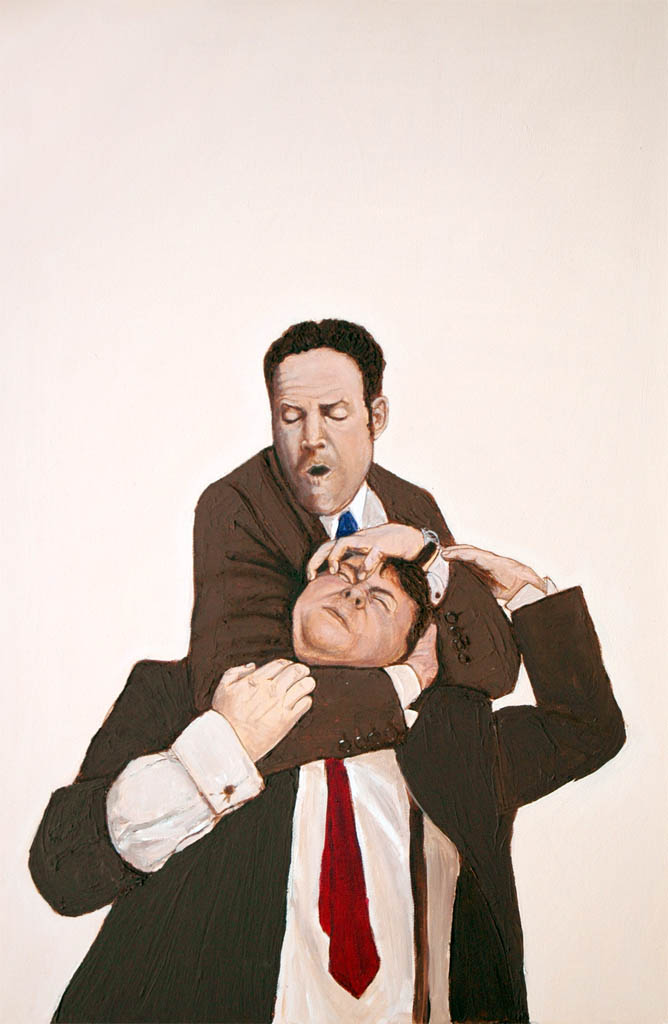
The language of business is littered with allusions to violence. The pursuit of the killer product, crushing the competition, dominating the market. Here we see what happens when the veneer of civility is transgressed and matters of business are settled man to man.
The titles are taken from terms used in the world of financial markets.
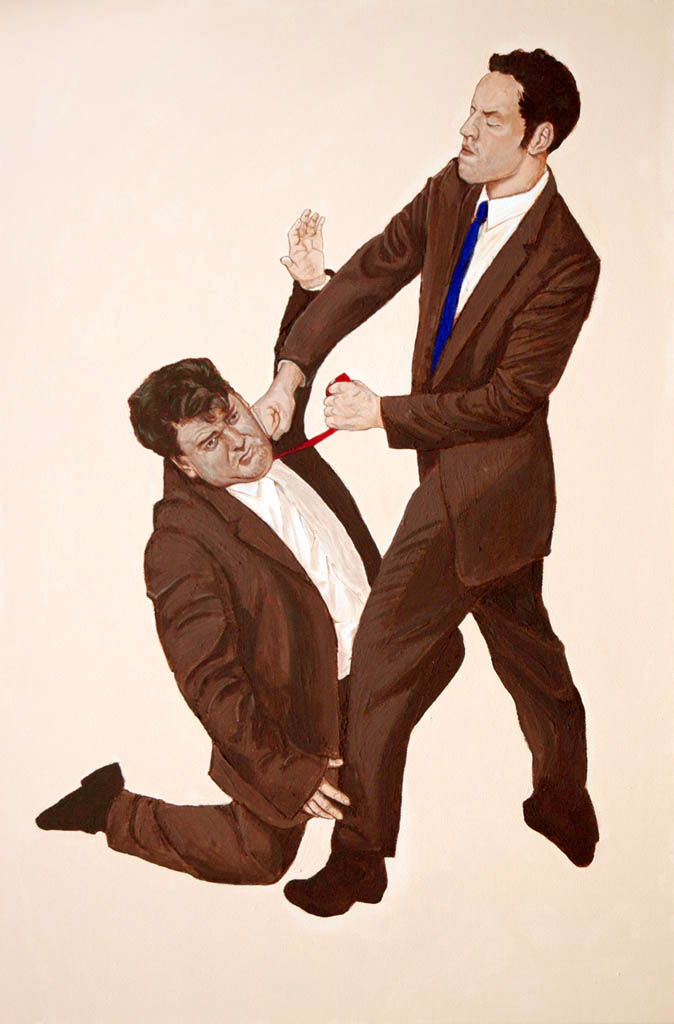
The language of business is littered with allusions to violence. The pursuit of the killer product, crushing the competition, dominating the market. Here we see what happens when the veneer of civility is transgressed and matters of business are settled man to man.
The titles are taken from terms used in the world of financial markets.
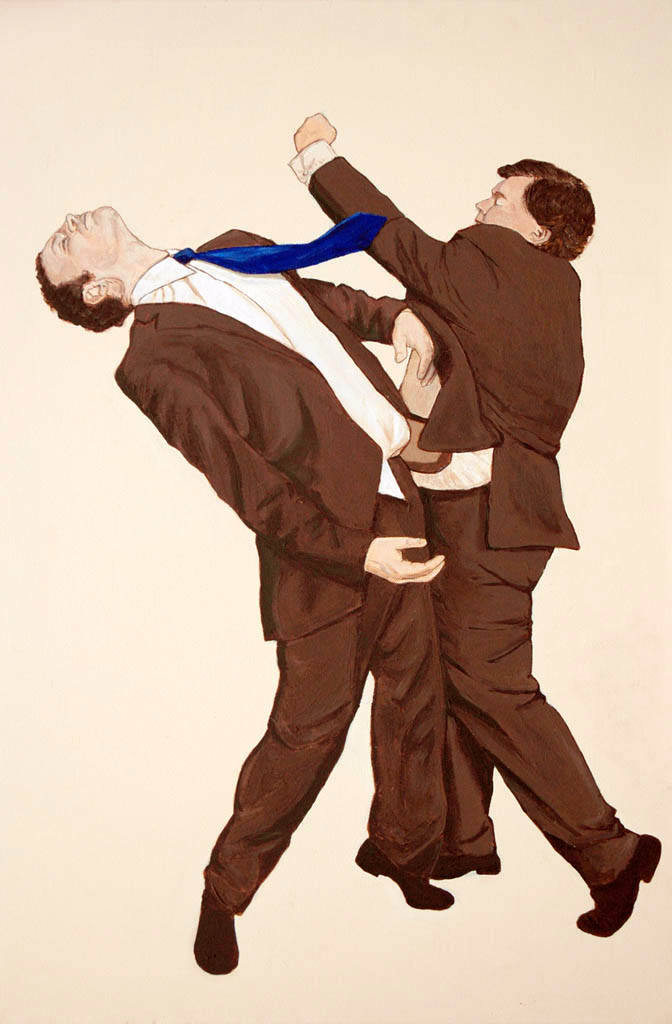
SOLD
The language of business is littered with allusions to violence. The pursuit of the killer product, crushing the competition, dominating the market. Here we see what happens when the veneer of civility is transgressed and matters of business are settled man to man.
The titles are taken from terms used in the world of financial markets.
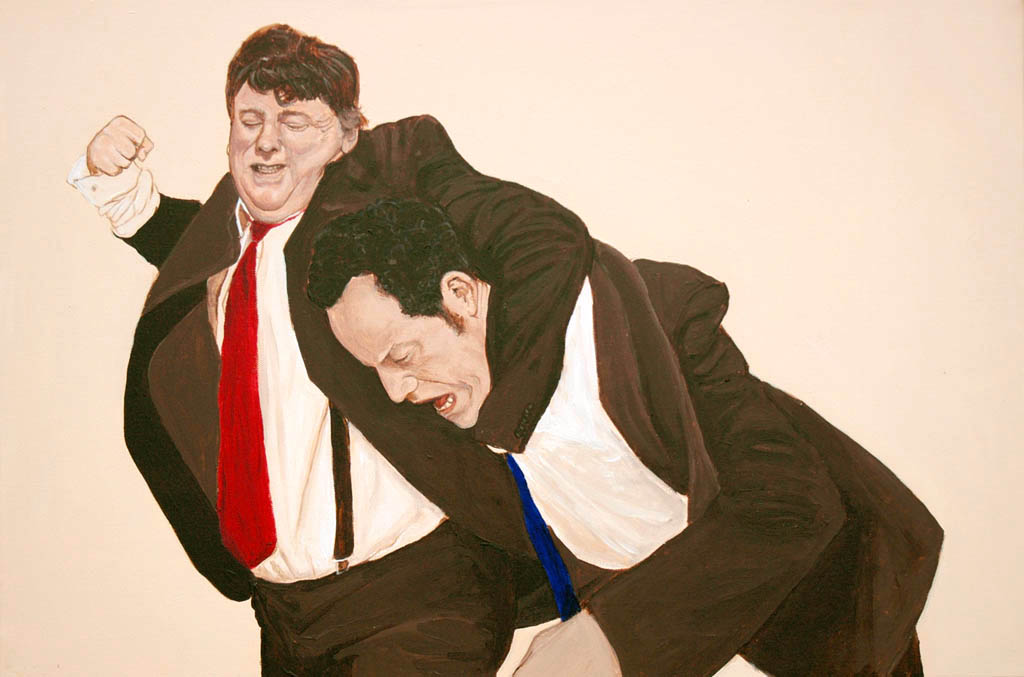
The language of business is littered with allusions to violence. The pursuit of the killer product, crushing the competition, dominating the market. Here we see what happens when the veneer of civility is transgressed and matters of business are settled man to man.
The titles are taken from terms used in the world of financial markets.
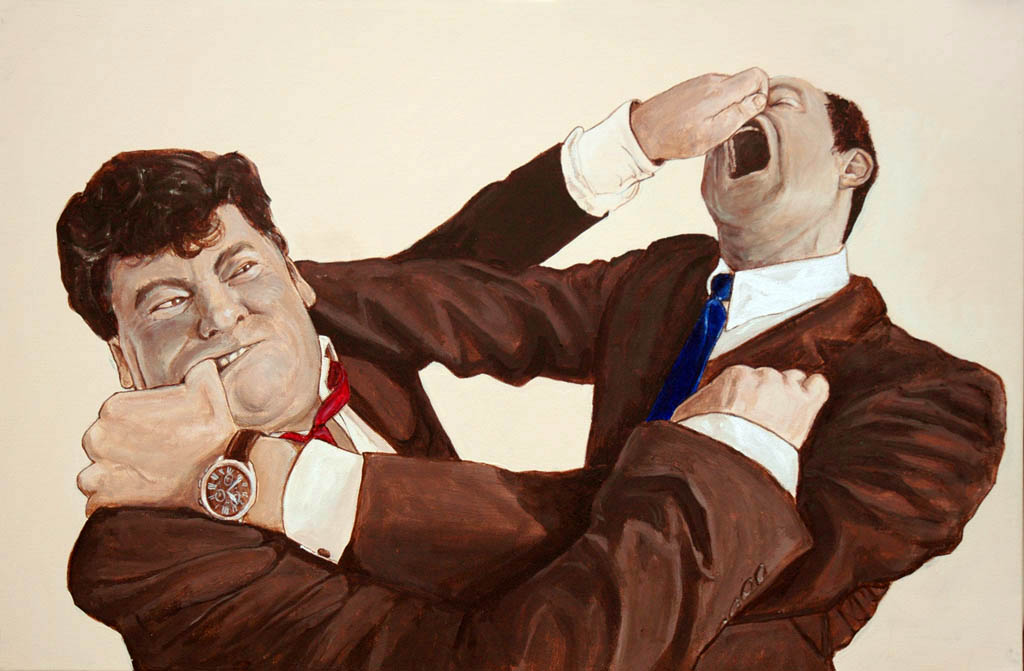
The language of business is littered with allusions to violence. The pursuit of the killer product, crushing the competition, dominating the market. Here we see what happens when the veneer of civility is transgressed and matters of business are settled man to man.
The titles are taken from terms used in the world of financial markets.
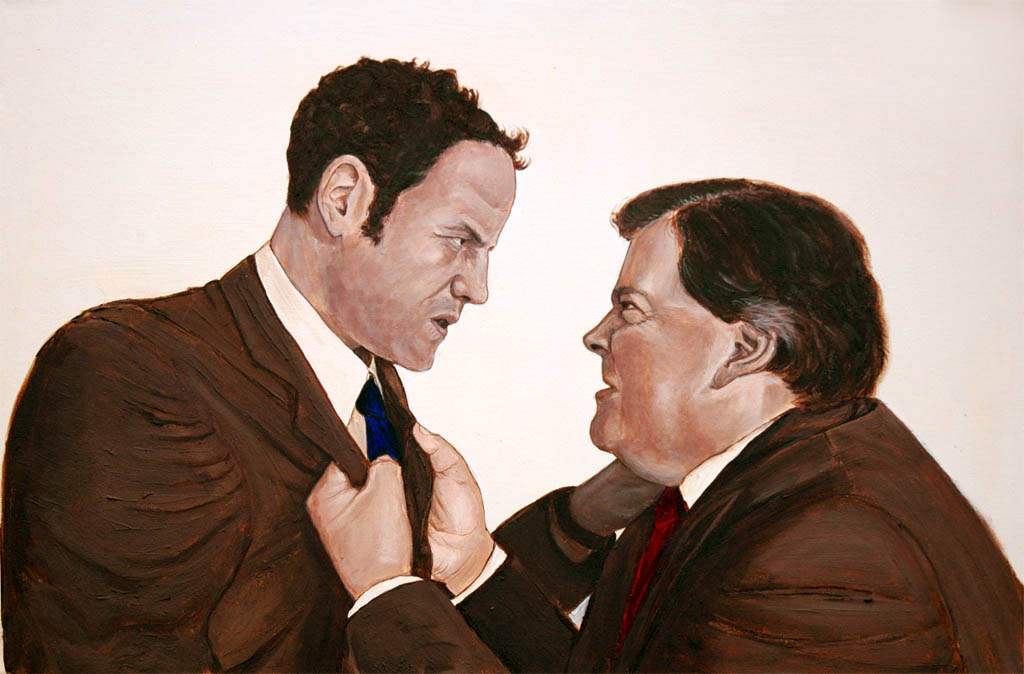
Erwin Schrödinger is considered as one of the founding fathers of quantum physics. He is, of course, most famous for his thought experiment, known as Schrödinger’s cat, an idea he developed while in correspondence with his friend, Albert Einstein . He received a Nobel Prize in Physics for his work in 1933.
I can find no evidence that he ever actually owned a pet cat, and perhaps since one possible outcome of his thought experiment is the death of the cat, it suggests he wasn’t overly fond of them.
In an attempt to convey the state of uncertainty in which the cat exists, I have painted the animal as a chimeric phantasm, visible fully only from a certain angle.
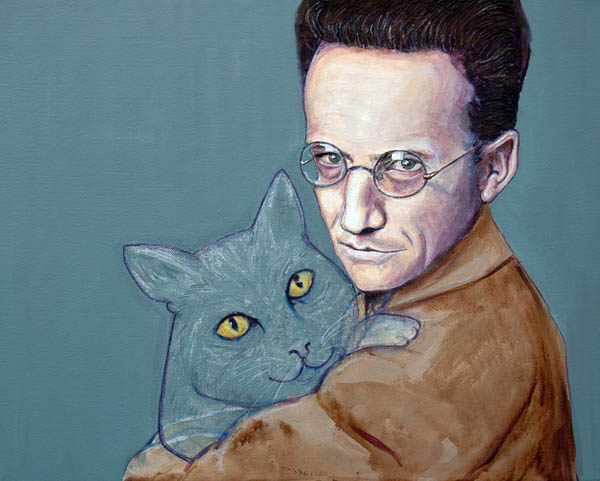
I have painted Alfred Schopenhauer with one of his pet Poodles.
Schopenhauer had a difficult relationship with other people, and in his latter 27 years of his life, preferred the company of his pet poodle, Atman. Or to be more precise, a series of poodles, all called Atman.
In what I like to think of as a piece of German philosophical humour, Atman is the Sanskrit word for the ‘true self’, something that he searched for, through his writings, for his entire life.
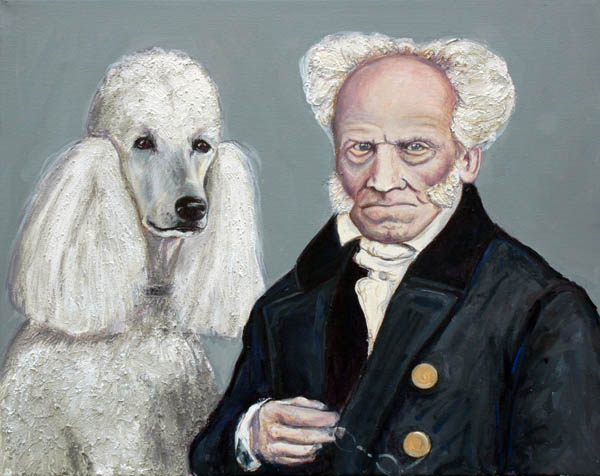
Friedrich Nietzsche was a hugely influential German philosopher. Much misunderstood and misrepresented, he is perhaps best known for his notion of the Will to Power.
I have painted him embracing a horse, a reference to the event which is generally considered to be the point of his mental breakdown.
From Wikipedia:
On January 3, 1889, Nietzsche suffered a mental collapse. Two policemen approached him after he caused a public disturbance in the streets of Turin. What actually happened remains unknown, but an often-repeated tale states that Nietzsche witnessed the whipping of a horse at the other end of the Piazza Carlo Alberto, ran to the horse, threw his arms up around its neck to protect the horse, and then collapsed to the ground.
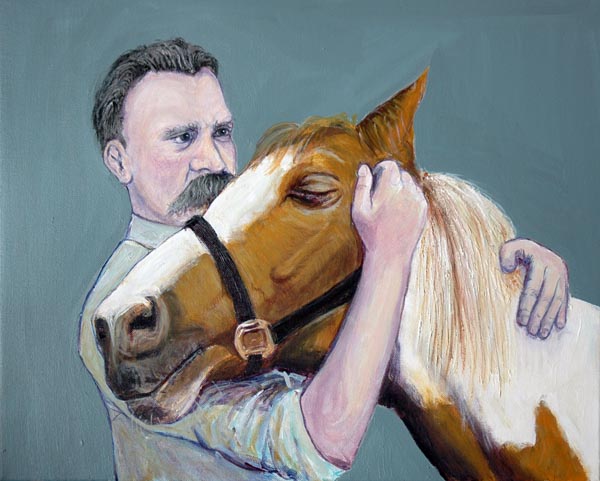
This work is a triptych of paintings inspired by the works of Cranach the Elder, a German Renaissance painter whose naive figurative stylings I find particularly appealing. His preoccupation with mythological and religious imagery succinctly demonstrates the power of visual art in times of widespread illiteracy. Cranach was also a friend of Martin Luther (who’s moral outrage at the corrupt Catholic Church led to a new branch of Christianity).
The paintings are made on a surface of 1980s comics, which may be considered morality tales in themselves. Comics provide simple stories of good versus evil, echoing the framework of the society they represent – Judeao/Christian moral landscape which in many ways remains unchanged since the Renaissance.
I have denied the figures their beauty by replacing their heads with skulls. A reminder that all of us are born condemned to die, that corporality is always hiding just beneath our skin. For those who believe in an ‘afterlife’, how we conduct ourselves inside our fleshy vessels impacts greatly on what happens after death.
I have placed the paintings in frames of my own construction, embedded with other signifiers of childhood moral gameplay; marbles, toy soldiers and cowboys & indians and other drossy ephemera.
Corporate Governance is a phrase used to describe the set of ‘guidelines’ for good business behaviour. The act of commercial enterprise, and Capitalism as a whole, has no explicit moral component, indeed the actions which led to the current financial crisis highlight how big business, motivated by profit, can produce large scale behaviour which many consider to be ‘amoral’ , and perhaps even criminal.
Corporate governance is an attempt to place an ethical framework around an inherently amoral activity.
The three paintings are titled ‘Introduction’, ‘Negotiation’ and ‘Execution’, representing the ‘sales cycle’ of a business interaction.